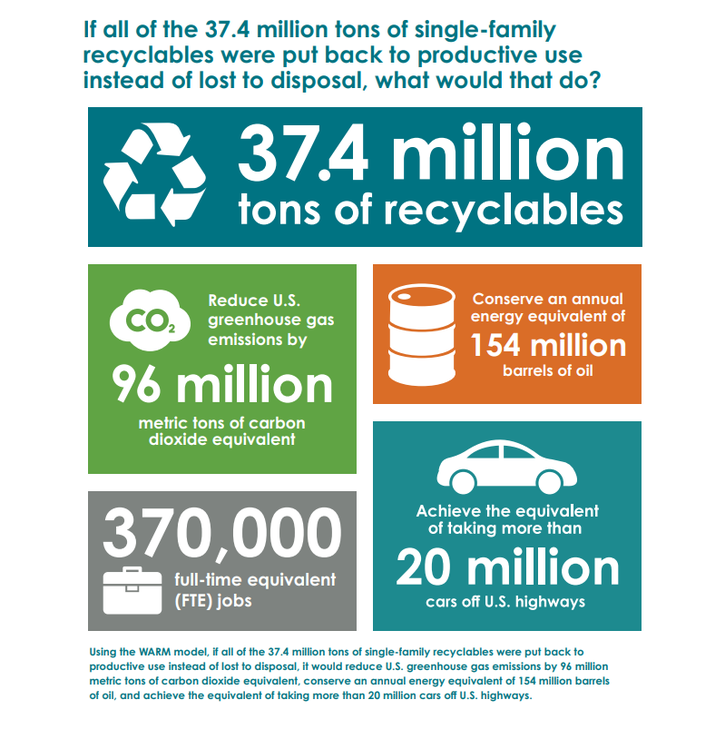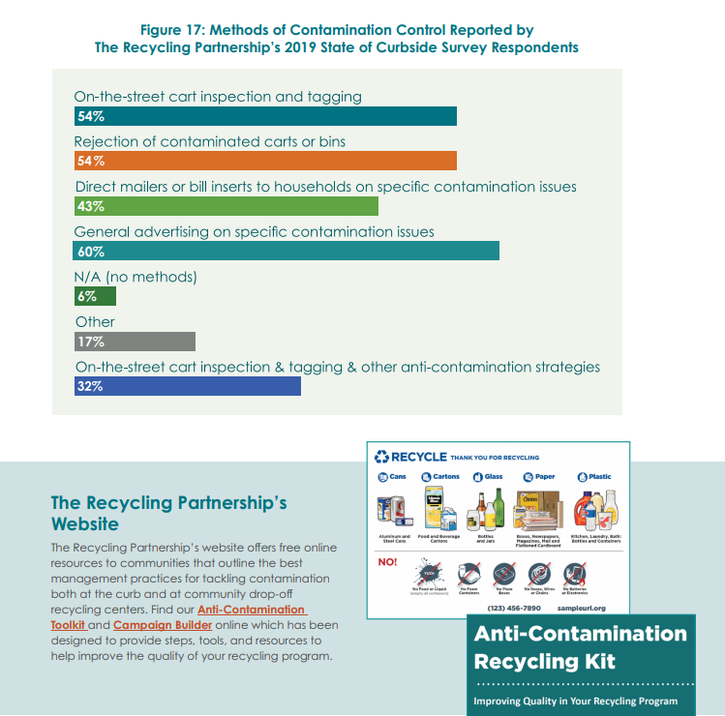Highlights from The Recycling Partnership’s 2020 Curbside Report
The report is broken up into five chapters and includes The Recycling Partnership’s top five perspectives on curbside recycling in the U.S.
The Recycling Partnership (TRP) has released its “2020 State of Curbside Recycling Report,” an analysis of the dimensions, performance, stresses and opportunities for improvement to curbside recycling in the United States.
The report points out that in order to help curbside recycling in the U.S. take the next steps in its singular purpose of capturing an estimated 37.4 million tons of commodities to feed a circular economy, it must be viewed as a system in which the application of common, broad interventions can help it achieve its full potential.
Currently, the U.S. curbside recycling system is successfully capturing an estimated 11.9 million tons, or about 32 percent of that 37.4 million tons. The Recycling Partnership notes that to create a higher-functioning system, three essential elements—curbside access, participation and participant capture behavior—must receive focused attention. According to the executive summary of the report, those elements can be addressed through smart applications of funding, best management practices and the broadest possible stakeholder involvement.

“System interventions are critical now as curbside recycling faces the most stressful time in its 30-year history,” according to TRP. “Dramatic declines in the monetary value of key materials due to dramatic shifts in the global marketplace have imposed higher costs on the local curbside programs that act as the frontline for material recovery in the U.S. This study finds that local programs now pay an average processing fee to materials recovery facilities (MRFs) of $64 per ton, with some programs absorbing fees exceeding $100 per ton.”
The study also addresses curbside contamination and documents a national average inbound contamination rate estimate of 17 percent by weight.
“The Recycling Partnership calls on all U.S. curbside recycling service stakeholders to be precise and consistent in adopting the term inbound contamination to measure and specifically differentiate contaminants in collected material from residues in MRFs,” TRP emphasizes in its report. “By focusing on inbound materials, communities can make major strides in addressing the contamination issue using proven best management practices discussed in this report.”

The report, which is broken up into five chapters, also includes TRP’s top five perspectives on U.S. curbside recycling:
More than 20 million tons of curbside recyclable material are disposed annually. Curbside recycling in the U.S. currently recovers only 32 percent of available recyclables in single family homes.
Only half of Americans have automatic access to curbside recycling; some who have access do not participate and not all who participate do so fully. True access must be increased, and the public can and should be engaged in improving participation and recycling behavior.
Many communities are increasingly paying more to send materials to a MRF than the landfill, and many programs lack critical operating funds. Helping community recycling programs improve will require addressing challenging market conditions, providing substantial funding support and addressing inexpensive landfill tipping fees that make disposal options significantly cheaper than recycling.
Investing to clean up the stream benefits all sectors of system. Contamination remains a critical issue, but it can be substantially reduced across the country by implementing proven techniques.
The ultimate fate of recyclable materials rests in the hands of a broad set of stakeholders who must all do something new and different to support a transition to a circular economy. Strong, coordinated action is needed in areas such as package design, capital investments, scaled adoption of best management practices, policy interventions and consumer engagement.
“The curbside recycling system in the U.S. has tremendous potential to contribute solutions to some of the world’s most pressing issues, including helping to slow climate change, reducing misutilization of vital resources and creating a circular economy,” the report concludes. “Built over 30 years of program and infrastructure development, accomplished through the exercise of political will in thousands of communities across the U.S. and supported through critical investments by private sector actors, the system is poised to take a leap into Recycling 2.0, a transformed and dynamically improving system.”
“However, that transformation will not occur without dedicated, large-scale intervention by all system stakeholders,” the report states.
According to TRP, strategies to achieve Recycling 2.0 will require:
Substantially greater support of community recycling programs with capital funding, technical assistance and efforts to strengthen and grow local political commitment to recycling services.
Development of new and enhanced state and federal recycling policies.
Continued and expanded investment in domestic material processing and end markets.
Citizen and consumer engagement to create and sustain robust and appropriate recycling behavior.
Continued innovation in the collection, sorting and general recyclability of materials, including the building of flexibility and resiliency to add new materials into the system.
Broader stakeholder engagement in achieving all elements of true circularity, in which the fate of all materials is not just intended to be recycled but that they are designed, collected and actually turned into something new.
About the Author
You May Also Like


.png?width=300&auto=webp&quality=80&disable=upscale)